
Glass vs. Wood in Home Design: Uncovering the Best for Your Space
Regarding home design and construction, every detail counts – and the materials you choose are no exception. Two of the most popular materials homeowners consider are glass and wood, each with unique appeal and advantages. While glass adds a modern touch and promotes a sense of openness and light, wood offers timeless beauty and a classic, natural feel. But how do you decide between these two materials? This article provides a comprehensive comparison between glass and wood, assisting you in making the most informed decision for your home. Whether building from scratch or renovating an existing space, understanding these materials will be incredibly beneficial. Let’s dive in.
Understanding the Materials

Glass
Glass, a transparent or translucent material, is made by heating sand or silica until it melts into a liquid. Once cooled, it solidifies into a hard, brittle, and optically transparent substance. Historically used in windows for its transparency and resistance to weather, it has now been used in various other home decor aspects. These include shower enclosures, walls, doors, and railings, to name a few. Glass can be customized to be clear, tinted, frosted, or even patterned, providing homeowners with a range of options to suit their style and needs.

Wood
Wood is a natural material sourced from trees. It has been a crucial part of construction and design for thousands of years due to its strength, flexibility, and availability. There are many types of wood, each with unique grain patterns, colours, and characteristics. Some are better suited for construction, while others are preferred for aesthetic qualities. Wood is commonly used in homes for furniture, flooring, and structural components like beams and walls. Its warmth and natural beauty offer a sense of coziness and connection to nature that few other materials can replicate.
The Ultimate Guide to Choosing the Perfect Staircase for Your Home
The Verdict
Both glass and wood have unique features and uses. Glass offers a modern and minimalist aesthetic with easy maintenance, while wood offers warmth, a natural vibe, and structural strength. Your choice will ultimately depend on the look and feel you want for your home.
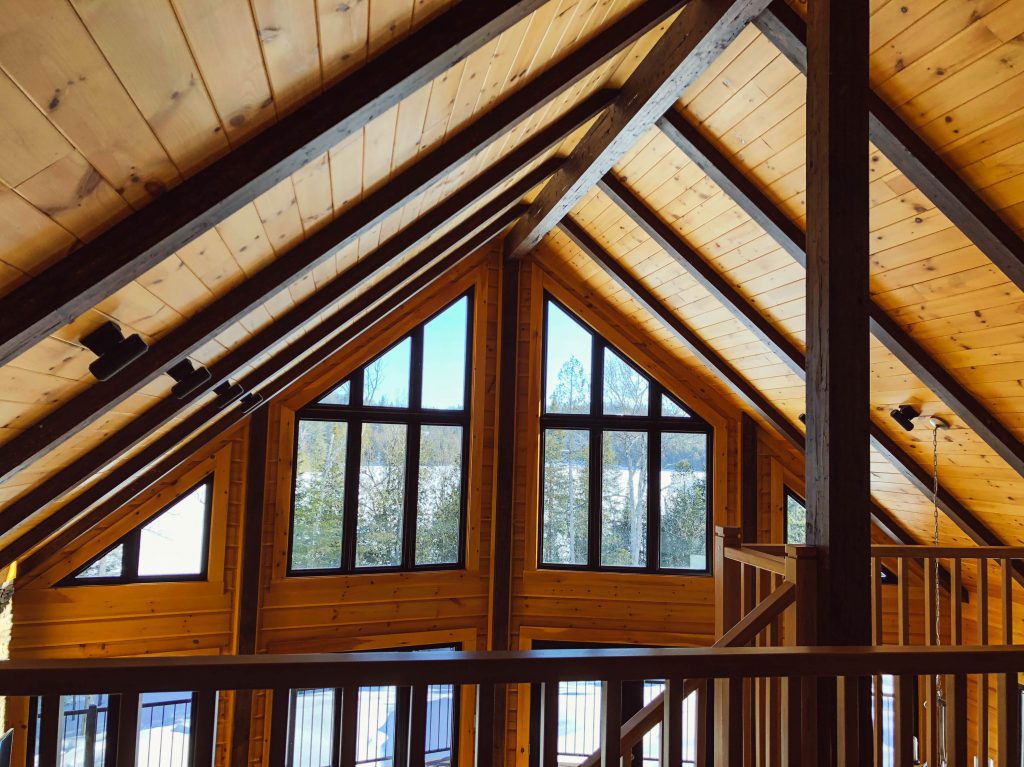
The Aesthetics
Glass
Glass brings a clean, modern appeal to any home. It works well in virtually all decor styles, from minimalistic to industrial to contemporary. The transparent nature of glass allows natural light to penetrate through, creating a bright and airy feel. Glass, particularly in large amounts, such as glass walls or partitions, can open up your space, providing seamless transitions between indoor and outdoor living spaces.
Wood
On the other hand, Wood offers a classic and natural beauty that can bring warmth and coziness to any space. The versatility of wood is impressive, with a range of types, stains, and finishes available to suit various decor styles. Whether rustic, traditional, or even modern, wood can adapt to enhance the aesthetic. Wood also provides texture and character, with grains and knots telling their unique stories.
The Verdict
Regarding aesthetics, the choice between glass and wood largely depends on the design style you prefer and the ambiance you want to create. If you’re aiming for a sleek, modern look with lots of light and a spacious feel, glass might be the right choice. However, wood could create a warm, welcoming environment with rich textures and natural touch.
Remember, these materials aren’t mutually exclusive in home design. They can be combined innovatively to create a balanced and harmonious aesthetic. A perfect example is the trend of using glass and wood together in staircases, where the solidity of wood balances the ethereal transparency of glass.
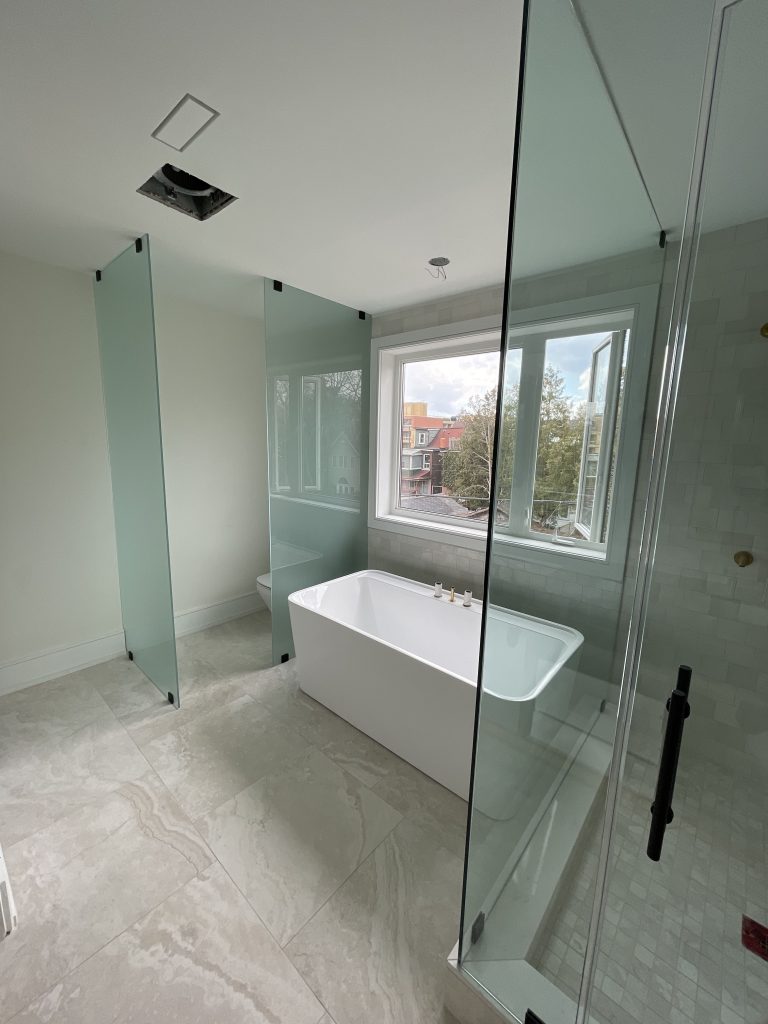
Decorative Elements for Your Sauna: A Blend of Aesthetics and Wellness
Durability
Glass
Glass has a high resistance to wear and tear, making it a durable choice for elements like railings, doors, or partitions. High-quality glass doesn’t yellow or fade over time, ensuring it retains its clarity and aesthetic appeal for years. Regarding maintenance, glass requires regular cleaning to keep it looking its best, but it’s generally resistant to staining and easy to clean with standard glass cleaners.
Wood
Wood, while robust and long-lasting, requires more care and maintenance. Wood can be susceptible to warping, rotting, or termite infestation if not properly treated and cared for. Regular staining or sealing might be required to maintain its beauty and longevity. Despite this, with the proper care, wood can last a lifetime and even be passed down through generations.
The Verdict
Both glass and wood have pros and cons in terms of durability and maintenance. Glass can offer simplicity in upkeep but requires careful handling to avoid scratches or breakage. Wood, although requiring more maintenance, can provide unrivalled longevity and a sense of timeless appeal.
5 factors to consider when choosing the glass railing system for your home
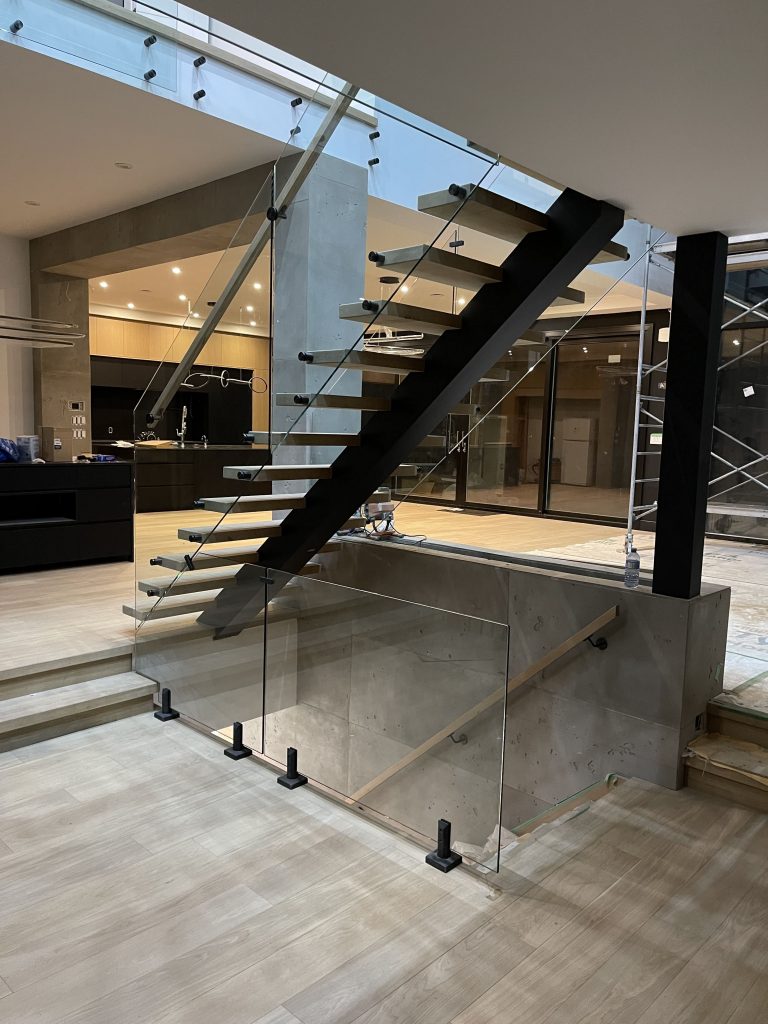
Maintenance
Glass
Glass is relatively easy to maintain. It requires regular cleaning to keep it smudge-free and looking its best, but a simple wipe-down with a cloth and glass cleaner usually does the trick. The high-quality glass is resistant to scratches and can withstand the test of time if cared for properly. Glass doesn’t warp or rot and is impervious to termites.
Wood
Wood requires more maintenance than glass. It needs regular sealing, staining, or painting to protect it from moisture and prevent warping or rotting. Wood is susceptible to scratches and can be damaged by termites. However, when properly cared for, wood can last many years and even improve with age, acquiring a patina that adds to its aesthetic appeal.
The Verdict
While glass is more low-maintenance compared to wood, the latter, with proper care and maintenance, can offer longevity and a distinct, matured aesthetic over time. Consider your willingness and ability to perform regular maintenance when choosing between the two materials.
Cost and Value
When comparing costs, it’s essential to note that glass and wood can range significantly depending on the type, quality, and customization level required.
Glass
Generally, high-quality, custom-cut glass can be more expensive upfront than wood. The cost increases with options like frosted or tinted glass, thicker panes, or custom shapes and sizes. However, its longevity, low maintenance requirements, and ability to create a spacious and modern aesthetic can add significant value to your home.
Wood
Wood costs vary widely based on the type, with exotic hardwoods being the most expensive. Custom woodwork can also add to the cost. But, like glass, it’s an investment that pays off. Quality wood adds an undeniable charm, warmth, and a timeless aesthetic to your home that can enhance its appeal and resale value.
Regarding overall value, both materials offer a good return on investment. Both can significantly enhance the aesthetic appeal of your home and can last for years with proper care. It’s important to remember that the best choice between glass and wood will often depend on the specific application, your personal preference, and the style of your home.
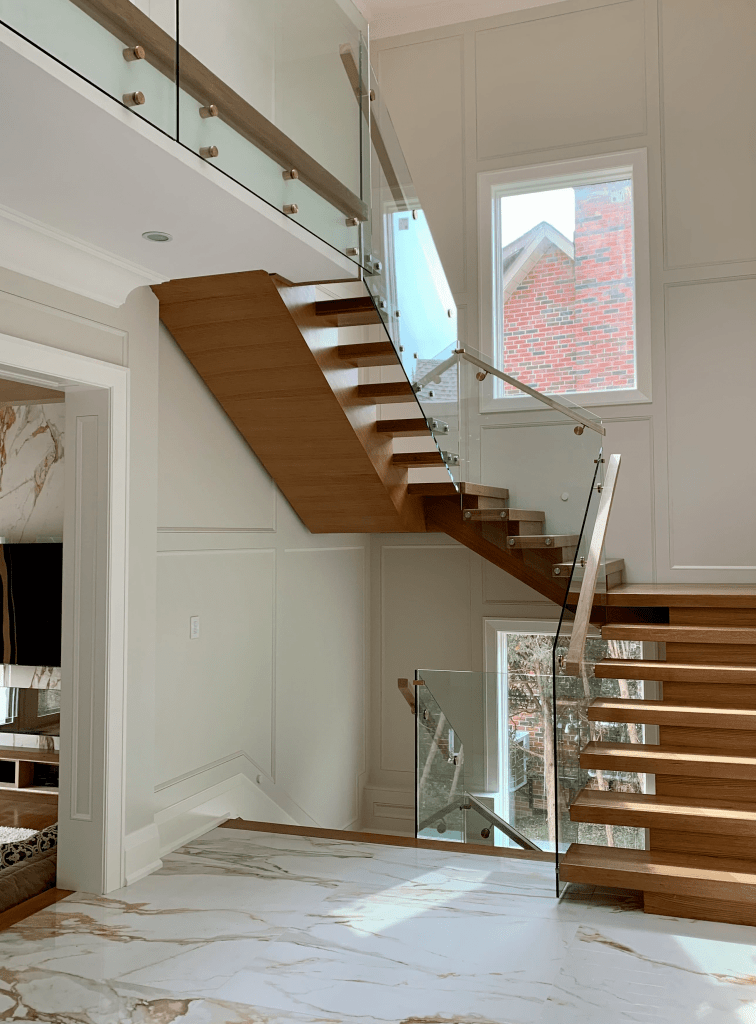
Safety Considerations
Glass
Glass in homes, particularly in features such as railings, doors, or walls, is made from tempered glass. Tempered glass is incredibly tough, up to four to five times stronger than regular glass. It is designed to shatter into tiny, granular pieces when broken rather than large, dangerous shards, significantly reducing the risk of injury. Also, glass railings can provide a sturdy, unobstructed barrier, especially in high-rise buildings or homes with young children.
Wood
Wood, a solid and robust material, is also a safe choice for homeowners. It offers a sturdy grip for stairs and railings, an essential factor for households with elderly members or children. However, wood can be susceptible to splintering over time, which can cause minor injuries if not properly maintained.
Safety should always be a top consideration in your home design decisions. Whether you choose wood or glass, comply with safety standards and guidelines. At Roble Glass & Railings, we prioritize the safety of our clients, and we ensure that all our installations meet or exceed the industry safety regulations.
Choosing the Right Glass Railing System: Standoff vs. Spigot vs. Base Shoe vs. Post System
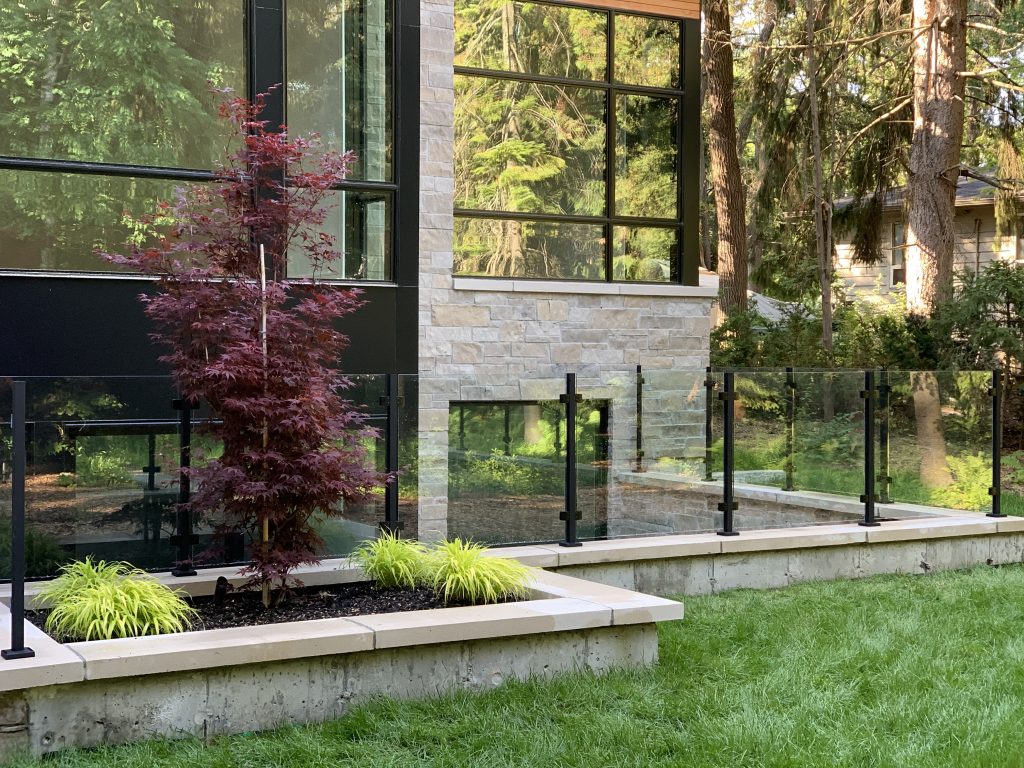
Conclusion
The decision between glass and wood for your home’s design elements ultimately comes down to your style, budget, safety considerations, and maintenance willingness. Each material has a unique charm, aesthetic appeal, and functional advantages. Glass offers a sleek, modern appeal, and visual expansiveness, while wood imparts a classic, warm, and timeless aesthetic.
Both materials are different; they serve different purposes and styles. By understanding the features of both materials, you can make an informed decision that best suits your home and lifestyle.
Remember, at Roble Glass & Railings, we’re here to help guide you through these decisions. Whether you’re leaning towards the sophistication of glass or the tradition of wood, our team of experts is ready to help you bring your vision to life.
Are you looking to renovate or upgrade your space? Reach out to Roble Glass & Railings today. Let’s explore the best material options for your home together!



